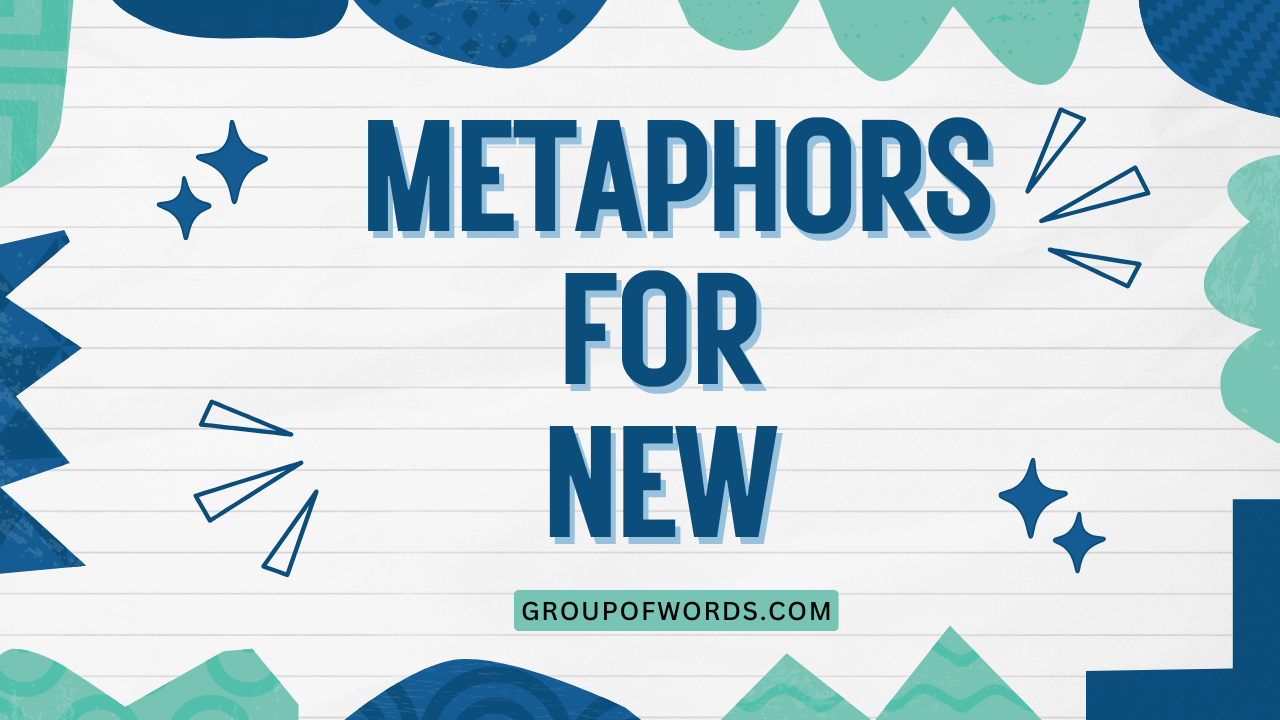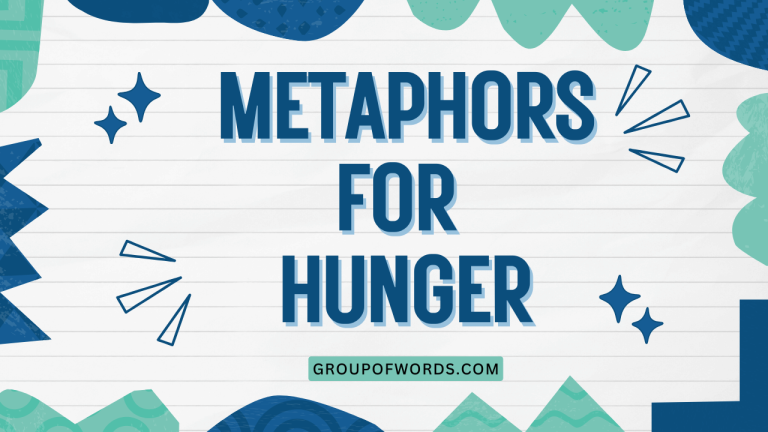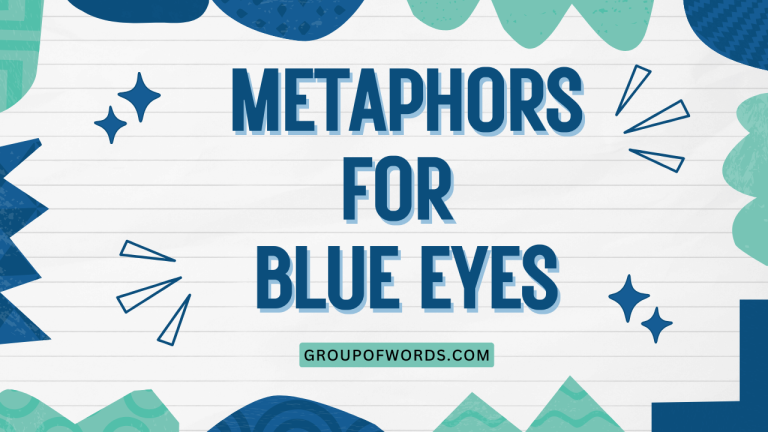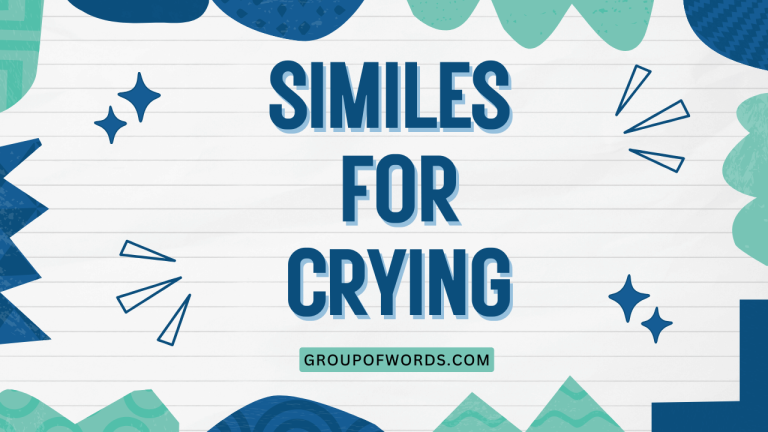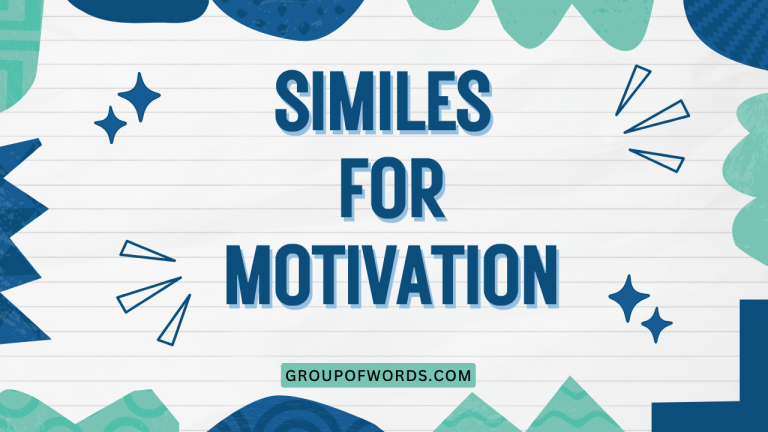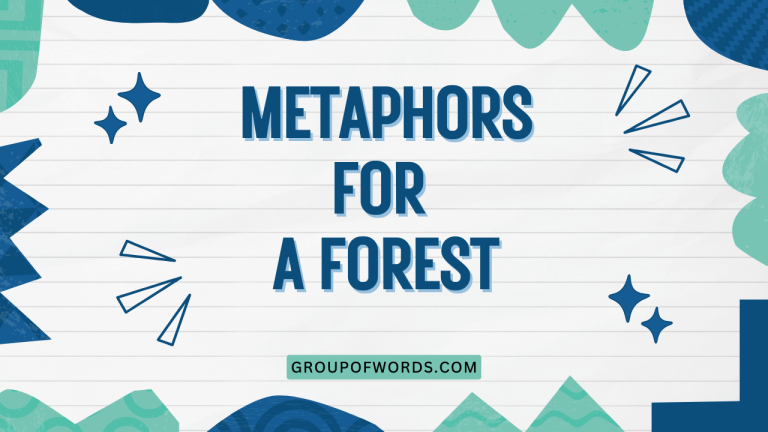Fresh Start: Mastering Metaphors for “New” in English
Understanding metaphors is crucial for mastering the nuances of English. Metaphors, especially those representing the concept of “new,” enrich our language, adding depth and color to our communication.
This article explores the various metaphors used to convey the idea of novelty, helping you to better understand and use them in your writing and speech. Whether you’re an English language learner, a student, or simply someone who loves language, this guide will provide you with the tools to express “newness” in creative and compelling ways.
By exploring these metaphors, you’ll gain insights into how native speakers perceive and describe the concept of “new,” enhancing your ability to communicate effectively and creatively. This article is designed to be accessible and informative, offering clear explanations, practical examples, and engaging exercises to solidify your understanding.
Table of Contents
- Definition of Metaphors for “New”
- Structural Breakdown of “New” Metaphors
- Types and Categories of Metaphors for “New”
- Birth and Beginnings
- Growth and Development
- Technology and Innovation
- Weather and Seasons
- Journeys and Exploration
- Examples of Metaphors for “New”
- Examples: Birth and Beginnings
- Examples: Growth and Development
- Examples: Technology and Innovation
- Examples: Weather and Seasons
- Examples: Journeys and Exploration
- Usage Rules for Metaphors of “New”
- Common Mistakes When Using Metaphors for “New”
- Practice Exercises
- Advanced Topics: Nuances and Subtleties
- Frequently Asked Questions
- Conclusion
Definition of Metaphors for “New”
A metaphor is a figure of speech in which a word or phrase is applied to an object or action to which it is not literally applicable. It’s a way of describing something by comparing it to something else, highlighting shared qualities or characteristics.
When we talk about “metaphors for ‘new’,” we’re referring to the various ways we use figurative language to express the idea of something being recent, original, or unprecedented.
Metaphors for “new” can take many forms, drawing from various domains of experience. They can involve imagery related to birth, growth, innovation, or exploration.
The function of these metaphors is to make the abstract concept of “newness” more concrete and relatable, adding emotional resonance and vividness to our language. In essence, they transform the ordinary into something extraordinary.
These metaphors are not just decorative; they play a crucial role in how we understand and communicate about change, progress, and beginnings. By understanding these metaphors, we gain a deeper appreciation for the flexibility and richness of the English language.
Structural Breakdown of “New” Metaphors
The structure of metaphors for “new” typically involves two key elements: the tenor and the vehicle. The tenor is the subject being described (in this case, the concept of “new”), and the vehicle is the object or idea used to represent it. The effectiveness of a metaphor depends on the relationship between the tenor and the vehicle, and how well the shared characteristics are highlighted.
For example, in the metaphor “a fresh start,” the tenor is the idea of a new beginning, and the vehicle is the word “fresh,” which evokes images of cleanliness, purity, and unspoiled potential. The connection lies in the shared quality of being untainted or unburdened by the past.
Understanding this structure helps us to analyze and appreciate the nuances of different metaphors.
Furthermore, the context in which a metaphor is used can significantly impact its meaning and effectiveness. A metaphor that works well in one context may be inappropriate or confusing in another.
Therefore, it’s essential to consider the audience, the purpose of the communication, and the overall tone when choosing a metaphor.
Consider these structural elements when crafting and interpreting metaphors for “new”:
- Tenor: The concept of “new” – a beginning, innovation, change, or novelty.
- Vehicle: The image, object, or idea used to represent “newness.”
- Ground: The shared characteristics between the tenor and the vehicle.
- Context: The surrounding situation influencing the metaphor’s interpretation.
Types and Categories of Metaphors for “New”
Metaphors for “new” can be categorized based on the source domain from which they draw their imagery. Here are some common categories:
Birth and Beginnings
These metaphors associate “new” with the act of being born or starting something. They emphasize the potential, purity, and vulnerability inherent in new beginnings.
Examples include “a nascent idea,” “a budding talent,” and “a newborn project.” These metaphors often carry a sense of hope and promise.
Growth and Development
Metaphors in this category equate “new” with the process of growing and developing. They highlight the gradual unfolding of potential and the progression from a small seed to a mature plant.
Examples include “a growing trend,” “an emerging market,” and “a developing technology.” These metaphors suggest a dynamic and evolving process.
Technology and Innovation
These metaphors link “new” with technological advancements and innovative solutions. They emphasize the cutting-edge nature and transformative power of new developments.
Examples include “a groundbreaking discovery,” “a state-of-the-art system,” and “a revolutionary approach.” Such metaphors often convey a sense of excitement and progress.
Weather and Seasons
Metaphors in this category draw parallels between “new” and weather patterns or seasonal changes. They highlight the cyclical nature of change and the fresh start that each season brings.
Examples include “a breath of fresh air,” “a spring in one’s step,” and “a new dawn.” These metaphors often evoke feelings of renewal and optimism.
Journeys and Exploration
These metaphors associate “new” with the act of embarking on a journey or exploring uncharted territory. They emphasize the sense of discovery, adventure, and the unknown.
Examples include “uncharted waters,” “a new frontier,” and “a path less traveled.” These metaphors often convey a sense of excitement and risk.
Examples of Metaphors for “New”
To further illustrate the different types of metaphors for “new,” here are some detailed examples organized by category. Each table provides a variety of metaphors, allowing you to see how the concept of “newness” can be expressed in diverse and creative ways.
Examples: Birth and Beginnings
The following table lists examples of metaphors for “new” that fall under the category of birth and beginnings. These metaphors often highlight the potential and vulnerability associated with new ventures.
| Metaphor | Explanation | Example Sentence |
|---|---|---|
| A nascent idea | A newly formed or just beginning idea. | The project is still in its nascent stage, but it shows great promise. |
| A budding talent | A talent that is just starting to develop. | The young artist has a budding talent that needs to be nurtured. |
| A newborn project | A project that has just started. | The company is excited about this newborn project and its potential impact. |
| A fresh start | A new beginning, often after a difficult period. | After the setback, he decided to make a fresh start in a new city. |
| A clean slate | A new opportunity to start over without the burden of past mistakes. | The new year offers a clean slate for everyone to pursue their goals. |
| A blank canvas | A new opportunity to create something without any preconceived notions. | The empty room was a blank canvas, waiting to be transformed. |
| A new chapter | A new phase or period in one’s life or in a story. | Moving to a new country marked the beginning of a new chapter in her life. |
| A fresh page | Similar to a clean slate, but often used in the context of writing or planning. | With the new management, the company turned over a fresh page. |
| A new lease on life | A renewed sense of purpose or energy. | After recovering from the illness, he felt like he had a new lease on life. |
| The dawn of a new era | The beginning of a significant period or change. | The invention of the internet marked the dawn of a new era in communication. |
| A seed of an idea | The very beginning of an idea, with the potential to grow. | The conversation planted a seed of an idea in his mind. |
| In its infancy | A project, idea, or organization in its earliest stages of development. | The AI technology is still in its infancy, but its potential is enormous. |
| A spring of hope | A new source or surge of hope. | The positive news provided a spring of hope during the difficult times. |
| A new bloom | A fresh start or renewed vitality. | After the renovation, the garden had a new bloom. |
| A hatching plan | A plan that is just being developed or conceived. | They had a hatching plan to expand the business. |
| The genesis of change | The origin or beginning of a significant change. | This project was the genesis of change in the organization’s culture. |
| A new genesis | A completely new beginning or creation. | The merger represented a new genesis for the two companies. |
| A new birth | A second chance or a complete transformation. | The company’s restructuring was seen as a new birth, giving it a fresh start. |
| Breaking ground | Starting something new, initiating a project. | They are breaking ground on a new research facility next month. |
| The first light | The initial indication or beginning of something. | With the new discovery, we’re seeing the first light of a solution. |
Examples: Growth and Development
This table presents metaphors that associate “new” with growth and development. These metaphors emphasize the dynamic and evolving nature of new things.
| Metaphor | Explanation | Example Sentence |
|---|---|---|
| A growing trend | A trend that is becoming increasingly popular or prevalent. | The use of renewable energy is a growing trend in the industry. |
| An emerging market | A market that is developing and becoming more important. | Southeast Asia is an emerging market for many international businesses. |
| A developing technology | A technology that is still being improved and refined. | Artificial intelligence is a developing technology with vast potential. |
| Sprouting ideas | New ideas that are beginning to emerge. | After the brainstorming session, sprouting ideas filled the whiteboard. |
| Blossoming success | Success that is gradually unfolding and flourishing. | Her hard work led to blossoming success in her career. |
| Flourishing enterprise | A business or project that is thriving and expanding. | The startup has become a flourishing enterprise in just a few years. |
| A budding relationship | A relationship that is just starting to develop. | They were excited about their budding relationship and its potential. |
| Taking root | Becoming established or firmly fixed. | The new policies are taking root within the organization. |
| Coming of age | Reaching maturity or full development. | The electric car industry is coming of age with increasing consumer demand. |
| Branching out | Expanding into new areas or activities. | The company is branching out into international markets. |
| A rising star | Someone who is quickly gaining popularity or success. | She is considered a rising star in the field of astrophysics. |
| Growing pains | Difficulties experienced during a period of growth or development. | The company is experiencing some growing pains as it expands. |
| A ripening opportunity | An opportunity that is becoming more favorable or advantageous. | They waited for the ripening opportunity to launch their new product. |
| An evolving strategy | A strategy that is continually changing and adapting. | The company adopted an evolving strategy to stay ahead of the competition. |
| Maturing process | A process that is developing and becoming more refined. | The wine undergoes a maturing process in oak barrels. |
| A burgeoning field | A field of study or industry that is rapidly growing. | Biotechnology is a burgeoning field with significant advancements. |
| A swelling tide | A growing movement or trend. | There’s a swelling tide of support for environmental conservation. |
| An expanding horizon | Increasing opportunities or possibilities. | Studying abroad opened up an expanding horizon for her career. |
| A blossoming career | A career that is thriving and progressing well. | After years of hard work, he finally had a blossoming career. |
| A flourishing market | A market that is experiencing strong growth and success. | The online retail market is a flourishing market with high demand. |
Examples: Technology and Innovation
This section presents metaphors that liken “new” to technological advancements and innovation. These metaphors underscore the transformative and cutting-edge qualities of new developments.
| Metaphor | Explanation | Example Sentence |
|---|---|---|
| A groundbreaking discovery | A discovery that is revolutionary and changes the way we understand something. | The scientist’s groundbreaking discovery revolutionized the field of medicine. |
| A state-of-the-art system | A system that uses the most advanced technology available. | The hospital installed a state-of-the-art system for patient monitoring. |
| A revolutionary approach | An approach that brings about a significant and fundamental change. | The company adopted a revolutionary approach to customer service. |
| Cutting-edge technology | The newest and most advanced technology. | The laboratory uses cutting-edge technology to conduct its research. |
| Next-generation solution | A solution that is more advanced than previous ones. | The software provides a next-generation solution for data analysis. |
| A game-changing innovation | An innovation that significantly alters the current situation. | The invention of the smartphone was a game-changing innovation. |
| A paradigm shift | A fundamental change in approach or underlying assumptions. | The acceptance of climate change has led to a paradigm shift in environmental policy. |
| A technological leap | A significant advancement in technology. | The development of quantum computing represents a technological leap. |
| A digital revolution | A major change brought about by digital technology. | The internet has sparked a digital revolution in communication. |
| A quantum leap | A dramatic and significant advance. | The new algorithm represents a quantum leap in data processing speed. |
| An innovative breakthrough | A significant and original advancement. | The researcher’s work led to an innovative breakthrough in cancer treatment. |
| A disruptive technology | A technology that significantly alters the way a market or industry operates. | Streaming services have become a disruptive technology in the entertainment industry. |
| A high-tech solution | A solution that uses advanced technology. | The company developed a high-tech solution for traffic congestion. |
| A futuristic design | A design that looks like it belongs to the future. | The electric car has a sleek and futuristic design. |
| A smart innovation | An innovation that uses technology to make something more efficient or intelligent. | The new appliance is a smart innovation that saves energy. |
| A cutting-edge design | A design that is at the forefront of technology and style. | The new smartphone features a cutting-edge design. |
| A technological frontier | The leading edge of technological development. | They are pushing the boundaries of the technological frontier. |
| An invention’s dawn | The beginning or initial appearance of a new invention. | We are at the invention’s dawn of personalized medicine. |
| A modern marvel | Something newly created that is technologically advanced and impressive. | This skyscraper is a modern marvel of engineering. |
| A digital transformation | The integration of digital technology into all areas of a business or organization. | The company underwent a digital transformation to improve efficiency. |
Examples: Weather and Seasons
This table provides examples of metaphors that use weather and seasonal imagery to represent “new.” These metaphors often convey a sense of renewal, change, and freshness.
| Metaphor | Explanation | Example Sentence |
|---|---|---|
| A breath of fresh air | Something new and refreshing. | The new manager was a breath of fresh air in the department. |
| A spring in one’s step | A feeling of renewed energy and enthusiasm. | After the vacation, she had a spring in her step. |
| A new dawn | The beginning of a new era or period. | The peace treaty marked a new dawn for the two countries. |
| A clear sky | A situation that is free from problems or difficulties. | With the agreement signed, the future looks like a clear sky. |
| A sunny outlook | A positive and optimistic perspective. | Despite the challenges, she maintained a sunny outlook. |
| The storm has passed | A difficult period is over, and things are improving. | Now that the storm has passed, we can start rebuilding. |
| A rainbow after the rain | Something positive that appears after a difficult time. | The new job was like a rainbow after the rain. |
| A gentle breeze | A mild and pleasant change. | The new policy was like a gentle breeze, bringing positive changes. |
| Thawing relations | Improving relationships after a period of tension. | After the meeting, there were signs of thawing relations between the two companies. |
| A refreshing change | A welcome and revitalizing alteration. | The new approach to management was a refreshing change. |
| A summer of opportunity | A period filled with many opportunities for growth and success. | This internship promises to be a summer of opportunity. |
| A winter of discontent (followed by spring) | A difficult or unhappy period followed by a time of renewal. | After a winter of discontent, the company is poised for a spring of growth. |
| The clouds are parting | Difficulties are beginning to disappear. | With the new plan in place, the clouds are parting for the project. |
| A break in the clouds | A temporary improvement in a difficult situation. | The new contract provided a break in the clouds for the struggling business. |
| Riding the wave | Taking advantage of a new trend or opportunity. | They are riding the wave of popularity for sustainable products. |
| A new tide | A significant change or shift in a situation. | The election brought in a new tide of political change. |
| A sea change | A fundamental and comprehensive transformation. | There has been a sea change in attitudes towards environmental issues. |
| The winds of change | Forces that are bringing about significant alterations. | The winds of change are blowing through the industry. |
| A sun shower | A momentary and unexpected period of joy or positivity. | The unexpected success of the project was like a sun shower. |
| Blazing a trail | Creating a new path or direction. | The entrepreneur is blazing a trail in the tech industry. |
Examples: Journeys and Exploration
This table presents metaphors that use the imagery of journeys and exploration to represent “new.” These metaphors often highlight the sense of discovery, adventure, and the unknown.
| Metaphor | Explanation | Example Sentence |
|---|---|---|
| Uncharted waters | A situation that is unfamiliar and potentially risky. | Starting a new business is like navigating uncharted waters. |
| A new frontier | A new area for exploration or development. | Space exploration is the new frontier of scientific discovery. |
| A path less traveled | A course of action that is unconventional or unique. | She chose to take a path less traveled in her career. |
| A voyage of discovery | A journey undertaken to find new knowledge or understanding. | The research project was a voyage of discovery. |
| Setting sail | Beginning a new venture or project. | They are setting sail on a new business venture. |
| Charting a course | Planning a route or strategy for a new endeavor. | The company is charting a course for future growth. |
| A road untaken | A decision or opportunity that was not chosen. | He often wondered what would have happened if he had taken the road untaken. |
| A new horizon | A new prospect or opportunity. | The promotion opened up a new horizon for her career. |
| A journey of a thousand miles | A long and challenging undertaking. | The project was the journey of a thousand miles, starting with a single step. |
| Breaking new ground | Doing something that has not been done before. | The scientist is breaking new ground in cancer research. |
| Exploring new avenues | Investigating new possibilities or opportunities. | The company is exploring new avenues for growth. |
| A pioneering spirit | A willingness to be the first to do something new or innovative. | The entrepreneur had a pioneering spirit. |
| Blazing a new trail | Creating a new path or direction. | The artist is blazing a new trail in contemporary art. |
| Navigating new challenges | Dealing with new and difficult situations. | The team is navigating new challenges in the changing market. |
| Venturing into the unknown | Entering a situation that is uncertain or unfamiliar. | They are venturing into the unknown with their new product. |
| Mapping out a strategy | Creating a detailed plan for a new project. | The team is mapping out a strategy for the upcoming marketing campaign. |
| Embarking on a quest | Beginning a long and challenging search or journey. | The researcher is embarking on a quest to find a cure for the disease. |
| Setting a new course | Changing direction or strategy. | The company is setting a new course to adapt to changing market conditions. |
| Finding new routes | Discovering new ways to achieve a goal. | They are finding new routes to improve efficiency in their supply chain. |
| Leading the way | Being the first to do something or setting an example. | The company is leading the way in sustainable business practices. |
Usage Rules for Metaphors of “New”
Using metaphors effectively requires careful consideration of several factors. First, ensure that the metaphor is appropriate for the context. A metaphor that works well in a casual conversation may be unsuitable for a formal presentation. Second, make sure that the metaphor is clear and understandable. Avoid using obscure or overly complex metaphors that may confuse your audience. Third, be consistent with your metaphors. Mixing metaphors can create a jarring effect and undermine your message. Finally, use metaphors sparingly. Overusing metaphors can make your writing or speech sound contrived and unnatural.
Here are some specific guidelines to follow:
- Know your audience: Tailor your metaphors to their level of understanding and cultural background.
- Maintain consistency: Avoid mixing metaphors from different domains.
- Be original: Strive to create fresh and imaginative metaphors that capture your audience’s attention.
- Consider the tone: Choose metaphors that align with the overall tone of your communication.
- Avoid clichés: Steer clear of overused metaphors that have lost their impact.
For example, instead of saying “the new project is a baby,” which is a common and somewhat cliché metaphor, you could say “the new project is a seedling, requiring careful nurturing to blossom.” This metaphor is more evocative and suggests a more nuanced understanding of the project’s potential.
Common Mistakes When Using Metaphors for “New”
One common mistake is using mixed metaphors, which occur when you combine two or more incompatible metaphors in the same sentence. For example, saying “the project is a seedling that must hit the ground running” mixes the metaphor of a growing plant with the metaphor of a race, creating a confusing and nonsensical image.
Another common mistake is using clichéd metaphors, which are overused and have lost their impact. Examples include “a fresh start” and “a new beginning.” While these metaphors are not inherently wrong, they lack originality and can make your writing sound uninspired.
Furthermore, some learners make the mistake of using metaphors that are culturally inappropriate or difficult to understand for non-native speakers. Always consider your audience and choose metaphors that are likely to be familiar and relevant to them.
Here are some examples of common mistakes and how to correct them:
| Incorrect | Correct | Explanation |
|---|---|---|
| The project is a newborn baby that needs to fly high. | The project is a newborn baby that needs careful nurturing. | Mixed metaphors: Combining “newborn baby” with “fly high” is inconsistent. |
| It’s a fresh start. | It’s a clean slate, free from past mistakes. | Clichéd: “Fresh start” is overused. A more descriptive metaphor is better. |
| This new concept is a fish out of water. | This new concept is unconventional but promising. | Culturally inappropriate: The “fish out of water” metaphor may not be universally understood. |
| The idea is in its budding infancy. | The idea is in its infancy. | Redundant: “Budding” and “infancy” convey similar meanings. |
| The company is navigating the winds of change in uncharted waters. | The company is navigating uncharted waters. | Overly complex: Too many metaphors in one sentence can be confusing. |
Practice Exercises
Test your understanding of metaphors for “new” with these practice exercises. Each exercise includes multiple questions to challenge your knowledge and help you improve your skills.
Exercise 1: Identifying Metaphors
Identify the metaphor for “new” in each sentence and explain its meaning.
| Question | Answer |
|---|---|
| 1. The project is a nascent idea with great potential. | The metaphor is “nascent idea.” It means the idea is newly formed and just beginning to develop. |
| 2. The company is breaking new ground in sustainable energy. | The metaphor is “breaking new ground.” It means the company is doing something innovative and unprecedented. |
| 3. The new policy was a breath of fresh air for the employees. | The metaphor is “breath of fresh air.” It means the policy was refreshing and revitalizing. |
| 4. The discovery marked the dawn of a new era in medicine. | The metaphor is “dawn of a new era.” It means the discovery signaled the beginning of a significant period of change. |
| 5. They are setting sail on a new business venture. | The metaphor is “setting sail.” It means they are starting a new project or undertaking. |
| 6. The technology is in its infancy, but its potential is enormous. | The metaphor is “in its infancy.” It means the technology is in its early stages of development. |
| 7. The company is exploring new avenues for growth. | The metaphor is “exploring new avenues.” It means the company is investigating new possibilities or opportunities. |
| 8. The merger represented a new genesis for the two companies. | The metaphor is “new genesis.” It means the merger was a completely new beginning or creation. |
| 9. She is considered a rising star in the field of astrophysics. | The metaphor is “rising star.” It means that she is quickly gaining popularity or success. |
| 10. The online retail market is a flourishing market with high demand | The metaphor is “flourishing market.” It means that the market is experiencing strong growth and success. |
Exercise 2: Using Metaphors in Sentences
Complete the following sentences by adding an appropriate metaphor for “new.”
| Question | Answer |
|---|---|
| 1. The project started as just __________. | 1. The project started as just a seed of an idea. |
| 2. The company’s new strategy is __________. | 2. The company’s new strategy is a breath of fresh air. |
| 3. Their __________ led them to success. | 3. Their pioneering spirit led them to success. |
| 4. The invention represents __________. | 4. The invention represents a technological leap. |
| 5. The team is __________ to meet the new challenges. | 5. The team is navigating new challenges to meet the new challenges. |
| 6. With the new CEO, the company experienced __________. | 6. With the new CEO, the company experienced a new genesis. |
| 7. The artist is __________ with his unique style. | 7. The artist is blazing a new trail with his unique style. |
| 8. The country’s economy is __________. | 8. The country’s economy is an emerging market. |
| 9. The partnership marked __________. | 9. The partnership marked the dawn of a new era. |
| 10. The solution is __________. | 10. The solution is a game-changing innovation. |
Exercise 3: Correcting Mistakes
Identify and correct the mistakes in the following sentences.
| Question | Corrected Answer | Explanation |
|---|---|---|
| 1. The new project is a newborn baby that must hit the ground running. | 1. The new project is a newborn baby that needs careful nurturing. | Mixed metaphor: Newborn baby and hit the ground running are incompatible. |
| 2. It’s a fresh start to break new ground. | 2. It’s an opportunity to break new ground. | Clichéd: “Fresh start” is overused. |
| 3. The idea is in its budding infancy and needs to set sail. | 3. The idea is in its infancy. | Redundant and mixed metaphor: “Budding” and “infancy” are similar; “set sail” doesn’t fit. |
| 4. This new concept is a fish out of water, but it will soon be a blossoming career. | 4. This new concept is unconventional, but it has the potential to blossom into a successful venture. | Culturally inappropriate and mixed metaphor: “Fish out of water” may not be universally understood; “blossoming career” doesn’t fit the concept. |
| 5. The company is navigating the winds of change while breaking new ground on uncharted waters. | 5. The company is navigating uncharted waters. | Overly complex: Too many metaphors make the sentence confusing. |
Advanced Topics: Nuances and Subtleties
At an advanced level, understanding metaphors for “new” involves recognizing the subtle nuances and contextual variations that can influence their meaning. This includes understanding the historical and cultural origins of certain metaphors, as well as the emotional and psychological associations they evoke.
For example, the metaphor “a clean slate” has its origins in the practice of writing on slate boards, which could be wiped clean for reuse. Understanding this history can add depth to your appreciation of the metaphor and its implications.
Similarly, the metaphor “a new dawn” has strong associations with hope, optimism, and the promise of a better future. Recognizing these associations can help you use the metaphor more effectively.
Furthermore, advanced users of English should be able to create original and imaginative metaphors that capture the essence of “newness” in unique and compelling ways. This requires a deep understanding of language, culture, and human psychology, as well as a willingness to experiment and take risks.
Consider these aspects for a deeper understanding:
- Historical context: Understanding the origin and evolution of metaphors.
- Cultural relevance: Recognizing how cultural background influences the interpretation of metaphors.
- Emotional impact: Appreciating the emotional associations that metaphors evoke.
- Originality: Creating fresh and imaginative metaphors that capture the essence of “newness.”
- Contextual awareness: Recognizing how the surrounding context influences the meaning of metaphors.
Frequently Asked Questions
What is the difference between a metaphor and a simile?
A metaphor is a direct comparison between two things, while a simile uses “like” or “as” to make the comparison. For example, “time is a thief” is a metaphor, while “time is like a thief” is a simile.
Why are metaphors important in language?
Metaphors add depth, color, and emotional resonance to language. They make abstract concepts more concrete and relatable, enhancing communication and understanding.
How can I improve my ability to use metaphors effectively?
Read widely, pay attention to how native speakers use metaphors, and practice using metaphors in your own writing and speech. Also, be mindful of context and audience.
What are some common sources of metaphors?
Common sources of metaphors include nature, human body, everyday objects, and social relationships.
How do metaphors evolve over time?
Metaphors can evolve through repeated use, changes in cultural context, and the emergence of new technologies and ideas. Some metaphors may become clichés, while others may gain new meanings and associations.
Conclusion
Mastering metaphors for “new” is an essential step towards achieving fluency and expressiveness in English. By understanding the different types of metaphors, recognizing their structural elements, and avoiding common mistakes, you can enhance your ability to communicate effectively and creatively.
Remember to practice using metaphors in your own writing and speech, and be mindful of the context and audience. With time and effort, you can develop a rich and nuanced understanding of metaphors for “new,” allowing you to express yourself with greater precision and impact.
Embrace the challenge, and enjoy the journey of discovering the power and beauty of figurative language.
